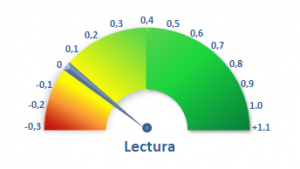Implementing institution: Rythm for reading
Country: United Kingdom
Source: Education Endowment Foundation
Execution period: 2013 - in progress
Plataforma de Prácticas Efectivas:
Improve children's ability to approach written and spoken words and phrases more fluently.
Weekly 10-minute sessions that run for 10 weeks, during which students participate in rhythm-based exercises as they read music notation.
The results have shown an increase of 0.03 SD of the reading abilities of the participating students.
Rhythm for Reading is a reading promotion program that includes rhythm-based exercises such as beating, clapping, and singing. It was developed by Dr. Marion Long as part of her doctoral thesis at the Institute of Education.
The exercises are given in weekly sessions of 10 minutes grouping 10 students. Participants read musical notes in a group and participate in rhythmic exercises at the same time. The aim is to develop students’ ability to discriminate between visual and oral symbols, as well as their ability to coordinate between their eyes and their bodies. Additional and individual sessions allow for an assessment of progress using a content comprehension test (the “NARA II” published by GL Assessment) and phonological awareness “Comprehensive Test of Phonological Processing” CToPP.
The first sessions are given by specialists from the Foundation who also trains the school’s teachers.
In England, the enrolment of children at elementary and secondary levels covers almost the entire population of attendance age (99.85% and 98.28% respectively by 2014). Net participation rates have been growing since 2006, especially at the secondary level (+6 percentage points). However, the OECD’s PISA survey has highlighted a decline in reading literacy levels among part of the 15-year-old English population since 2011.
Between April and June 2013, the National Foundation for Educational Research (NFER) evaluated the Rhythm for Reading methodology in order to assess its effects on the reading abilities of grade 7 students. The study was carried out in the form of an experimental evaluation involving 419 students in 6 elementary schools. 209 students received the intervention, while the other 210 did not. Comparison of group results on a standardized reading test (“GL Assessment New Group Reading Test”, NGRT) has shown a moderate increase in student abilities in the intervention group (+0.03 SD). However, the result was not statistically significant, so it could have occurred by chance. Considering its possible dissemination, the evaluation team recommends a Rhythm for Reading pilot project in a population younger than grade 7 students.
Impact of intervention:

Charts: Impact measured in standard deviations of the intervention group compared to the control group
Link: http://rhythmforreading.com/
Report: Ver informe
Other documents: Ritmo-para-la-lectura.pngRythim-for-reading-e1494200016254.jpg
Tags: